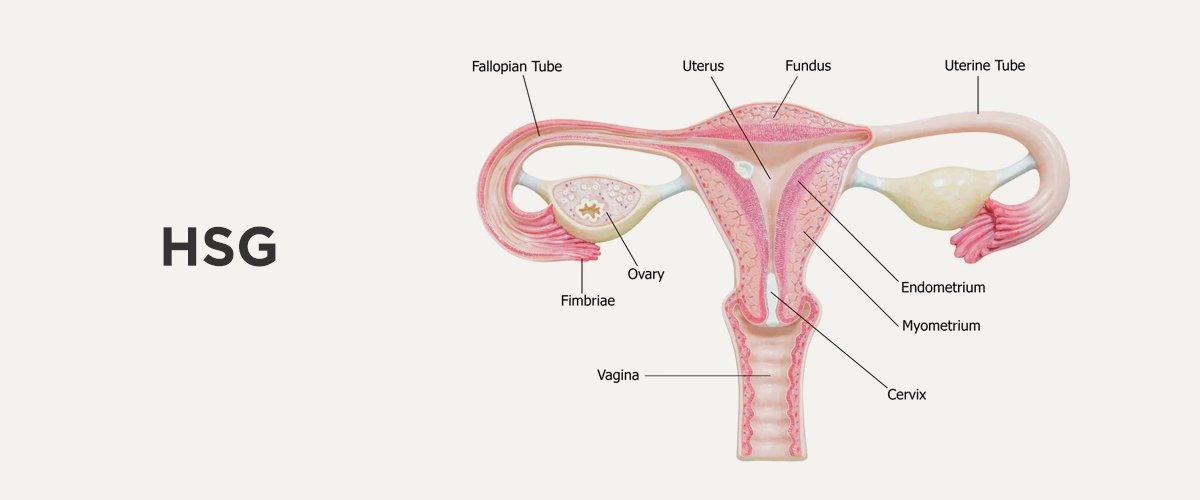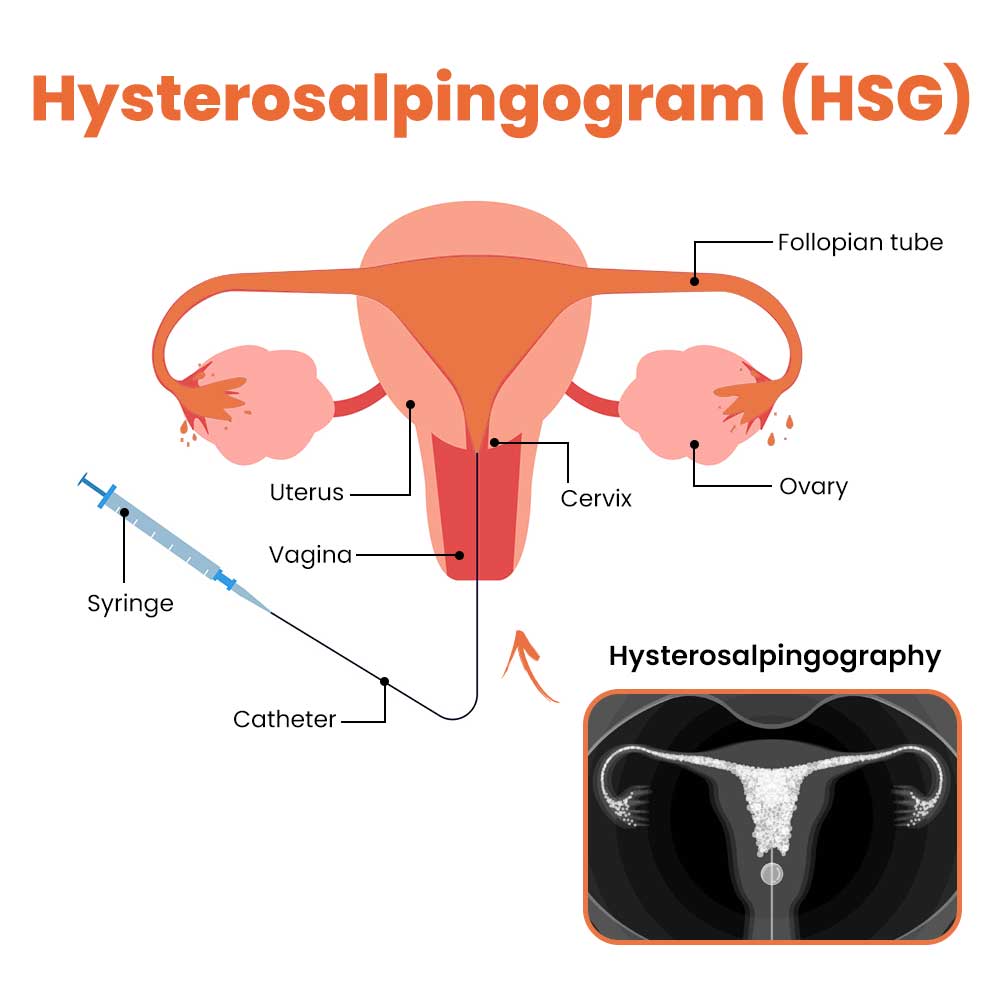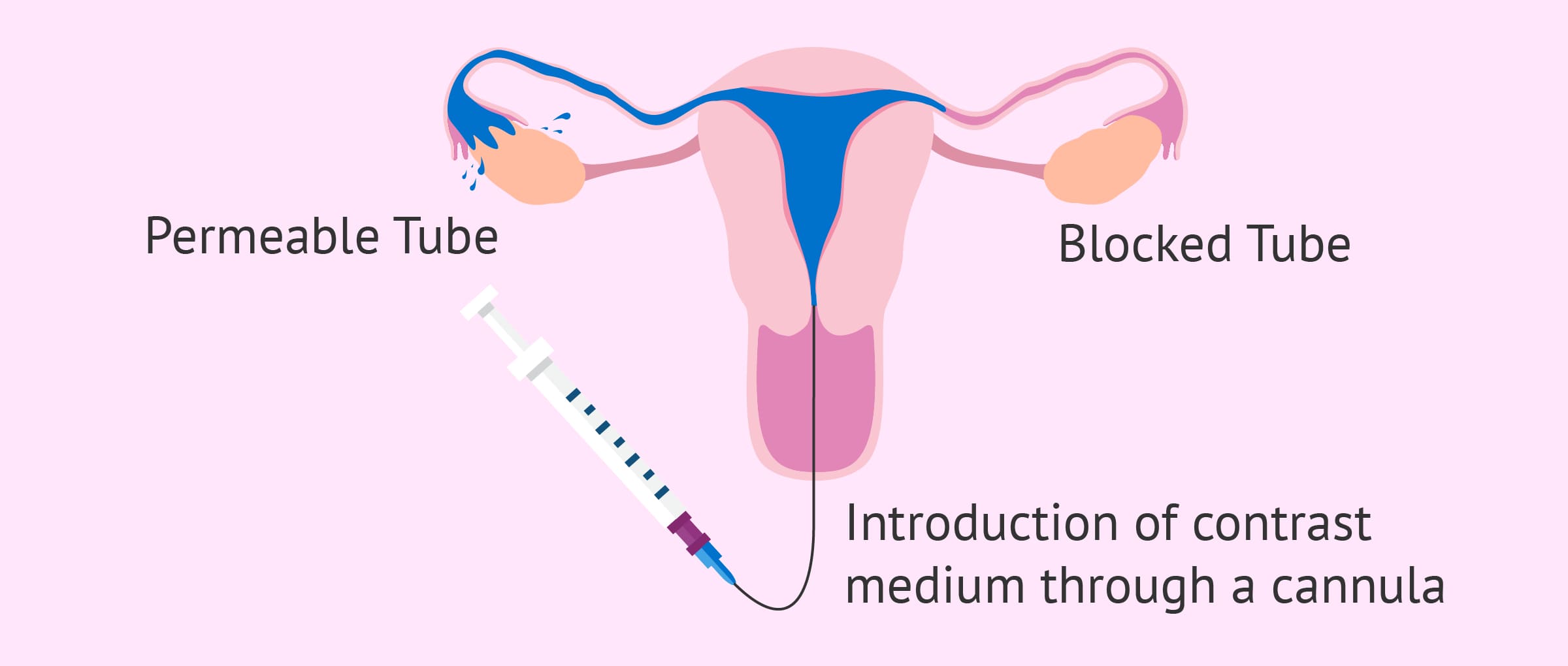Hysterosalpingography Procedure
08
Feb
2022
What is a Hysterosalpingography?
A hysterosalpingography is a type of X-ray that looks at a woman’s uterus (womb) and fallopian tubes (structures that carry eggs from the ovaries to the uterus). This type of X-ray uses a contrast material so that the uterus and fallopian tubes show up clearly on the X-ray pictures. The type of X-ray used is known as fluoroscopy, which creates a video picture rather than a still image.
The radiologist could watch the dye as it moves through your reproductive system. They will then be able to see if you have any blockage in your fallopian tubes or other structural abnormalities in your uterus. Hysterosalpingography might be also referred to as uterosalpingography.

Why Is the Test Ordered?
Your doctor might order this test if you are having difficulty getting pregnant or have had pregnancy problems, like multiple miscarriages. Hysterosalpingography could help diagnose the cause of infertility.
Infertility might be caused by:
- Structural abnormalities in the uterus, which might be congenital (genetic) or acquired
- Blockage of the fallopian tubes
- Scar tissue in the uterus
- Uterine fibroids
- Uterine tumors or polyps
If you have had tubal surgery, your doctor might order hysterosalpingography to check that this surgery was successful. If you had a tubal ligation (a procedure that closes the fallopian tubes), your doctor might order this test to make sure that your tubes are closed properly. The test could also check that a reversal of tubal ligation was successful in reopening the fallopian tubes.
Preparing for the Test
Some women find this test painful, so your doctor might prescribe you a pain medication or suggest over-the-counter pain medication. This medicine should be taken about an hour prior to your scheduled procedure. Your doctor might also prescribe a sedative to help you relax if you are nervous about the procedure. They might prescribe an antibiotic to take prior to or after the test to help prevent infection.
The test will be scheduled a few days to a week after you have had your menstrual period. This is done to make sure that you are not pregnant. It also helps reduce your risk of infection. It is important to let your doctor know if you may be pregnant because this test could be hazardous to the fetus. In addition, you should not have this test if you have the pelvic inflammatory disease (PID) or unexplained vaginal bleeding.
This X-ray test uses a contrast dye. Contrast dye is a substance that, when swallowed or administered, helps to highlight specific organs or tissues from those around them. It does not dye the organs and will either dissolve or leave the body by urination. It is important to let your doctor know if you have had an allergic reaction to barium or contrast dye.
Metal could interfere with the X-ray machine. You will be asked to remove any metal on your body, like jewelry, prior to the procedure. There will be an area to store your belongings, but you might wish to leave your jewelry at home.

What Happens During the Test?
This test needs that you put on a hospital gown and lie down on your back with your knees bent and your feet spread, as you would during a pelvic exam. The radiologist will then insert a speculum inside your vagina. This is done so that the cervix, which is located at the back of the vagina, could be seen. You might feel some discomfort.
The radiologist will then clean the cervix and might inject a local anesthetic into the cervix to reduce discomfort. The injection might feel like a pinch. Next, an instrument known as a cannula will be inserted into the cervix and the speculum will be removed. The radiologist will insert dye in the cannula, which will flow into your uterus and fallopian tubes.
You will then be placed under the X-ray machine, and the radiologist will start taking X-rays. You might be asked to change positions several times so that the radiologist could capture different angles. You might feel some pain and cramping as the dye moves through your fallopian tubes. After the X-rays have been taken, the radiologist will remove the cannula. You will then be prescribed any suitable medications for pain or infection prevention and you will be discharged.
Test Risks
Complications from hysterosalpingography are uncommon. Possible risks include:
- Allergic reaction to contrast dye
- Endometrial (uterine lining) or fallopian tube infection
- Injury to the uterus, like perforation

What Happens After the Test?
After the test, you might continue to have cramps similar to those experienced during a menstrual cycle. You might also experience vaginal discharge or slight vaginal bleeding. You should use a pad instead of a tampon to prevent infection during this time.
Some women also suffer from dizziness and nausea after the test. These side effects are normal and will ultimately go away. However, let your doctor know if you experience any symptoms of infection, including:
- Fever
- Severe pain and cramping
- Foul-smelling vaginal discharge
- Fainting
- Heavy vaginal bleeding
- Vomiting
Once the test is complete, the radiologist will send your doctor the results. Your doctor will review the results with you. Depending on the results, your doctor might want to do follow-up examinations or order further tests.

Hill Regional (HRH) Hospital is here to assist all your medical needs with specialists and surgeons trained and experienced in the most advanced treatments. Our highly qualified doctors, nurses, and administrators are dedicated to caring for you with compassion in our state-of-the-art facilities.
Call us on 254-580-8500 to book an appointment with our specialist doctors.